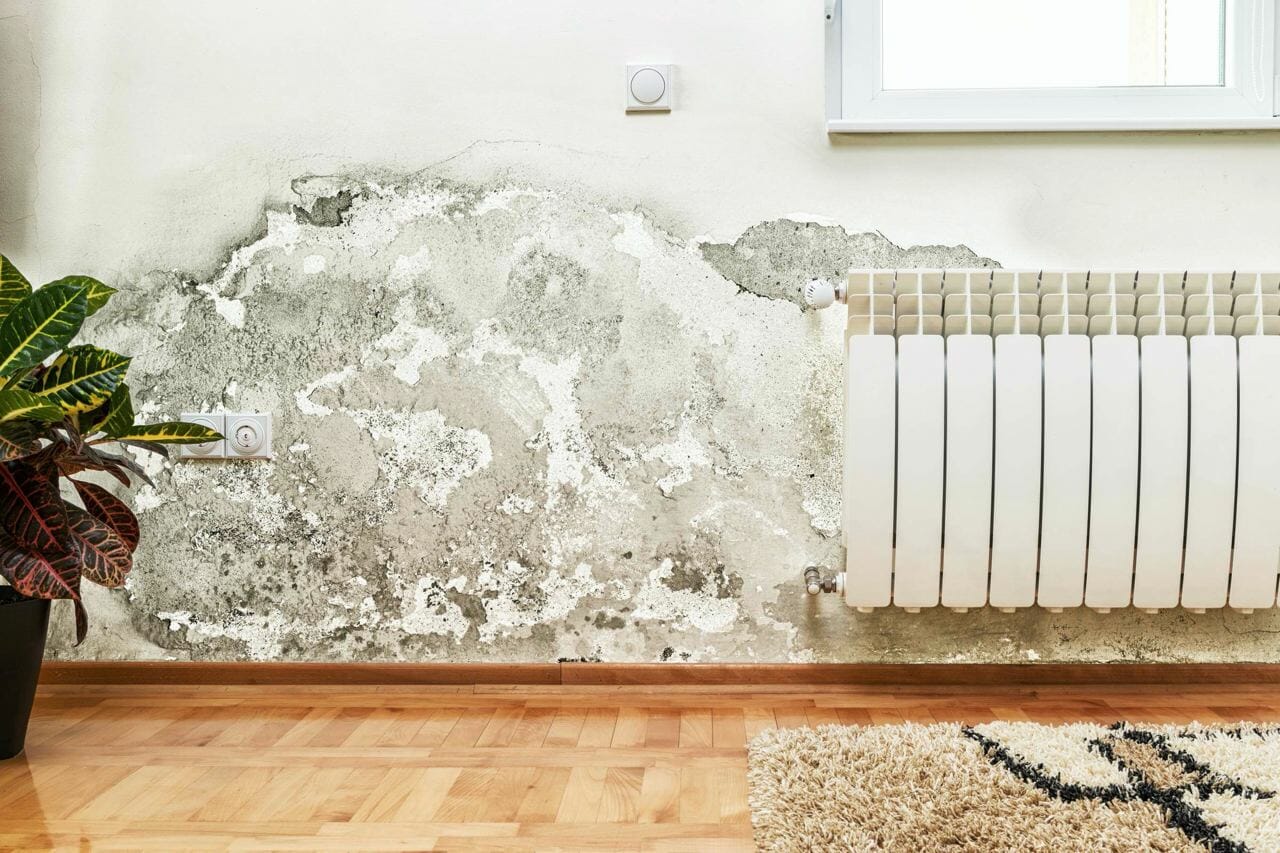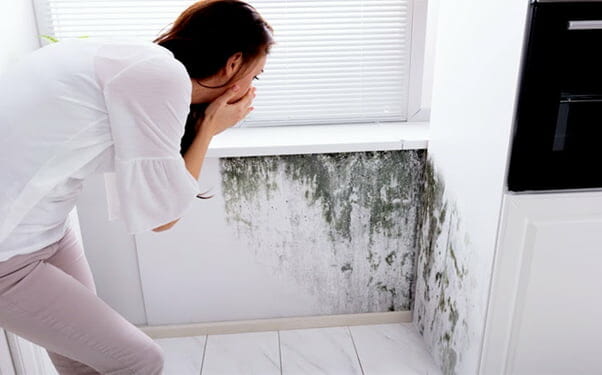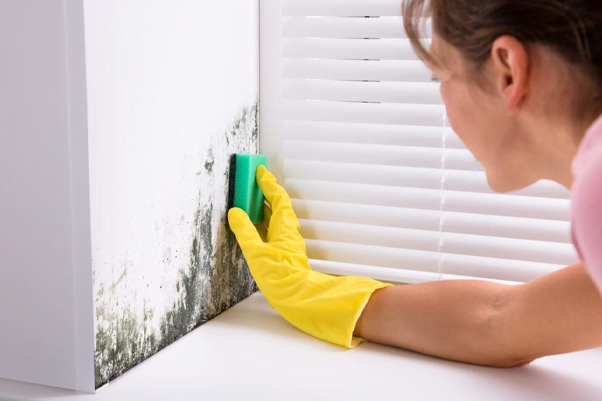It’s a homeowner’s worst nightmare: one day you walk into your kitchen, living room, bathroom, or basement, only to discover large, unsightly patches of mold growing on your walls. Wall mold is very common and can grow very quickly.
If you have mold growing on your walls it must be removed as it can be harmful to your health. There are a number of ways you can remove it. Depending on the type of material the mold is growing on – tile, drywall, or even concrete – you can easily it by using a few common household products. Another way is to get a professional remediation company.
It is worth mentioning that only small mold growths – less than 3 feet by 3 feet – can be removed without the aid of a professional. Larger mold growths will require the services of a professional mold inspector and remediator, according to the Environment Protection Agency.
How to clean mold from walls

If you have discovered mold growing on the walls of your home or property, there are a few key things you will need to take care of before attempting to remove any mold yourself.
Firstly, gauge the size of the mold growth. If it measures more than 10 square feet, you should immediately seek the help of a mold removal professional.
Secondly, arm yourself with the proper personal protective equipment. At a minimum, this equipment includes:
- Mask (preferably N-95)
- Protective eyewear
- Rubber gloves
- Sturdy, enclosed shoes
Finally, make sure the area in which you are working is well-ventilated. You will be working with household chemicals including bleach, so should ensure that you are working safely and responsibly. And, don’t forget, mold finds it harder to grow in a bright, well-ventilated space!
As you’re working with bleach, remember that due to the toxic fumes that can result, bleach should never be combined with ammonia.
Remove mold from drywall
Mold loves to grow on cellulose-rich drywall. If you have noticed mold growing on your drywall, take the following steps to remove it.
- Add dishwashing detergent to a solution of bleach and water in the ratios of 1 part detergent, 10 parts bleach, and 20 parts water.
- Apply the solution to the affected area with a sponge or cloth. Do not over-saturate the surface.
- Allow the solution to air dry, and do not rinse away the detergent-bleach-water solution.
- Keep the area dry and well-ventilated.
Remove mold from bathroom walls
Mold is often found on tiles and bathroom walls as this area of the home typically has a higher level of moisture and humidity than other areas of the home. Luckily, mold is fairly easy to remove from tiles if you follow the basic steps outlined below:
- Add 1 part bleach to 16 parts water.
- Apply the bleach-water solution to the mold-affected area with a sponge or cloth.
- Let the bleach-water solution sit on the affected area for at least 15 minutes.
- Scrub the affected area with a sponge or scourer if necessary.
- Rinse the bleach-water solution off the tiled area with water and wipe dry.
- Keep the area dry and well-ventilated.
Basement wall mold removal
As most basement walls are made from concrete, you can take a slightly more aggressive approach to mold removal if you find it growing on your basement walls. The basics and principles of removing mold from concrete are much the same as removing mold from drywall or tiles.
- Mix a solution of 1 part detergent, 10 parts bleach, and 20 parts water – the detergent will help the bleach solution adhere to the porous concrete.
- Apply the bleach solution to the affected area with a sponge or cloth.
- Allow the solution to sit on the affected area for at least 15 minutes.
- Scrub the area if necessary.
- Rinse the area clean with water, or use a power hose if you are able to.
Does cleaning mold kill it?
For small mold growths, such as those you find on the walls of your home, cleaning the growth away with a solution of bleach and water will be effective in removing it.
It is impossible to completely kill or eradicate all mold spores from your home as some are airborne, but after remediation and keeping on top of moisture, they should not return.
Can I prevent mold from coming back?
If you take the proper precautions and follow a few simple steps, it can be fairly easy to prevent the recurrent growth of mold or mildew. This assumes, however, that you do not have an underlying, serious moisture issue in your home. If this is the case, even the most careful of homeowners will be unable to prevent mold from coming back!
- Keep your home bright and breezy: A well-ventilated home that gets plenty of sunshine is much less likely to grow mold than a home with darkness and dampness.
- Minimize dampness in your property: As mold thrives in damp areas and needs moisture in order to grow, it should come as no surprise that minimizing the dampness and moisture in your home is one of the easiest ways to prevent mold growth. Whether by improving the ventilation in your home or by investing in a dehumidifier, there are a number of ways in which you can bring the ambient humidity in your home down.
- Keep it cleaner: Mold spores spread via the air, via your clothes and hair, via your pet’s fur, and even via dust particles! Ensuring you regularly dust and vacuum your home will mean that these spores won’t have a chance to take root and grow into larger patches of mold.
Is it safe to live with mold on walls?
The Centers for Disease Control and Prevention (CDC) states that there is no acceptable level of indoor mold growth. As such, you should consider even a small mold growth on your walls as potentially harmful, and take steps to remove it as soon as possible.

Should I get an air test done with wall mold?
If you have visible mold growths in your home, there is no need to have a mold air test performed. As the CDC instructs homeowners that no level of mold growth can be considered safe, they do not recommend testing mold, spore counts.
Instead, they advise that you take steps to remove any visible mold growths in your home, seeking the advice and assistance of mold removal specialists if required.
How much is professional wall mold removal?
The cost of removing mold from your home will depend upon several factors, including the extent and location of the mold growth, as well as the damage caused by any underlying moisture issues that have caused the mold to grow in the first place.
On average, you can expect to pay between $15 to $30 per square foot for mold removal. In terms of an hourly rate, this cost averages out to around $75-$110 per hour. The exact cost of your wall mold removal will depend upon your individual circumstances.
Want a shortcut?
The fastest and easiest way to get three cost estimates for removing mold from your walls, all from reputable mold removal services near you, is to use this FREE service.
Homegardenguides.com quickly matches you with 3 mold professionals who have been voted #1 by previous users in your area.
- Scroll up to the top of the page and enter your ZIP Code.
- Provide a few details about your mold removal job, plus some contact information.
- Your details are forwarded to the best three mold removal specialists in your area, who will be in touch with a quote and some helpful advice.

Can I paint over wall mold?
Unfortunately, painting over your mold problem will not prove effective in the long term. Although there are several ‘mold killing’ or ‘mold resistant’ paints on the market, these are often ineffective in solving your mold problem for two key reasons.
Firstly, these paints do not fix the underlying moisture or dampness issue that caused the mold to grow in the first place. In fact, by simply painting over wall mold, you might be tempted to ignore the moisture or dampness issue in the long run, making it worse.
Secondly, while these paints may smother existing mold spores and cut off their access to oxygen, many of them do not prevent new mold spores from taking root and growing on the wall. This is most likely to happen if you have not taken additional steps to remediate any underlying causes of mold growth in your home.
Do I need to remediate mold on exterior walls?
A good rule of thumb when it comes to mold removal in remediation is that even a small amount of mold is too much mold. As there is no level of mold growth that can be considered safe, you should take steps to remove mold from the exterior walls of your home as soon as you notice it.
Removing mold from the exterior walls of your home is relatively straightforward, and a simple bleach and water solution will effectively remediate mold growths on almost any type of exterior wall material, from siding and concrete to brick and stone.
Be careful using a bleach solution around your plants and grass, as it can damage them. Cover them with a tarpaulin or other water-resistant material while you work.
You can apply a solution of bleach and water (1 cup of bleach to 1 gallon of water is a good ratio) with a powerhouse, garden house, or simply by hand. Allow the solution to dry, scrubbing the affected if necessary.














